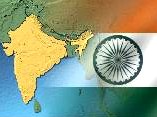


All You Need to
Know About INDIA
Government
Politics
Administrative divisions
Geography
Economy
Demographics
Culture
Last updated on
Sunday, October 29, 2006 19:28
- Mac. Dream. MX
For most of its democratic history, India adhered to a quasi-socialist approach, with strict government control over private sector participation, foreign trade, and foreign direct investment. Starting from 1991, India has gradually opened up its markets through economic reforms by reducing government controls on foreign trade and investment. Privatisation of public-owned industries and some sectors to private and foreign players has continued amid political debate.
India has a labour force of 496.4 million of which 60% is employed in agriculture or agriculture-related industries which contributes to only about 22% of the GDP, 17% in mainstream industry and 23% in service industries. India's agricultural produce includes rice, wheat, oilseed, cotton, jute, tea, sugarcane, potatoes. Major industries include textiles, chemicals, food processing, steel, transportation equipment, cement, mining, petroleum and machinery.
India's large English speaking middle-class has contributed to the country's growth in Business Process Outsourcing (BPO). It is becoming a major base for US tech companies for future targeted research & development, including the likes of Google, IBM, and Microsoft. All this has helped the services sector to increase its share of the economy to approximately 50%.
India is also a major exporter of financial, research and technology services. India's most important trading partners are the United States, China, UK, Singapore, Hong Kong, the United Arab Emirates, Switzerland and Belgium.

The Bombay Stock Exchange index reflects investor confidence in the economy of India
Terms
of Service, Privacy
Policy, Contacts and Credits
© 2006 thanneer91. All rights reserved
Page tested with Internet Explorer and Mozilla Firefox
Best viewed at a resolution of 600 X 800
Any unauthourized duplication of this site is strictly prohibited and liable
to prosecution
Timeline of Indian History ~~ Military History of India ~~ Indian Independance Movement